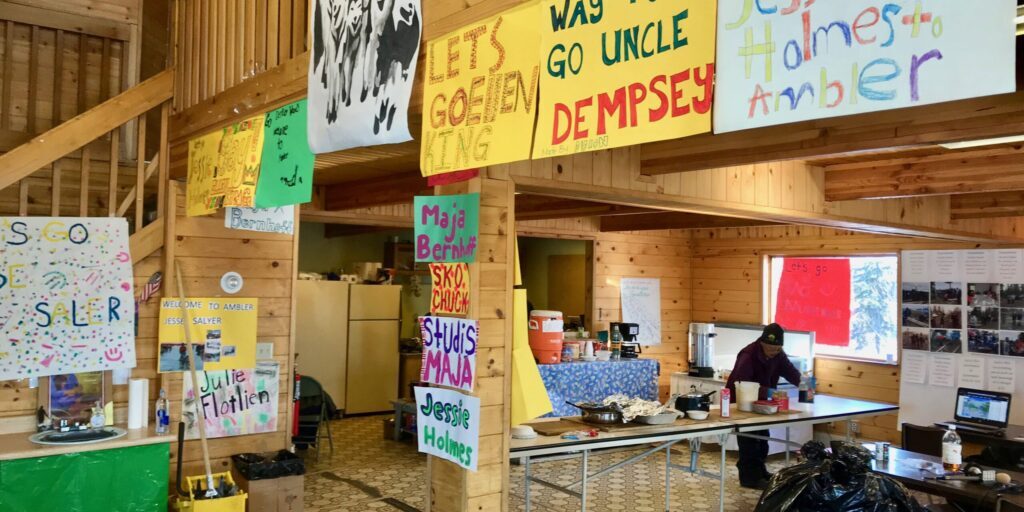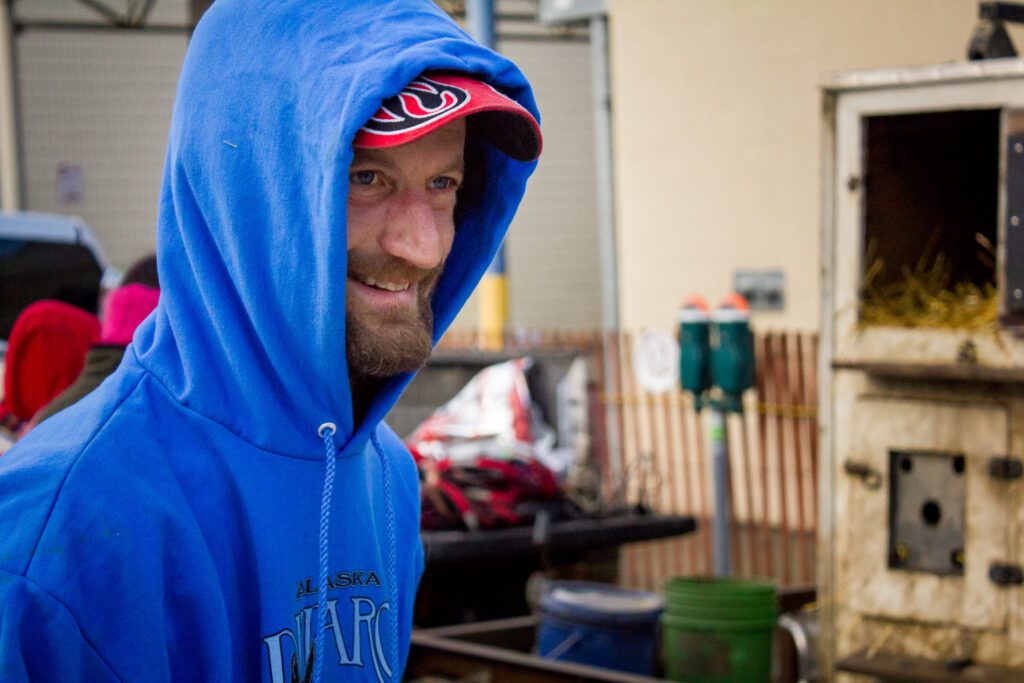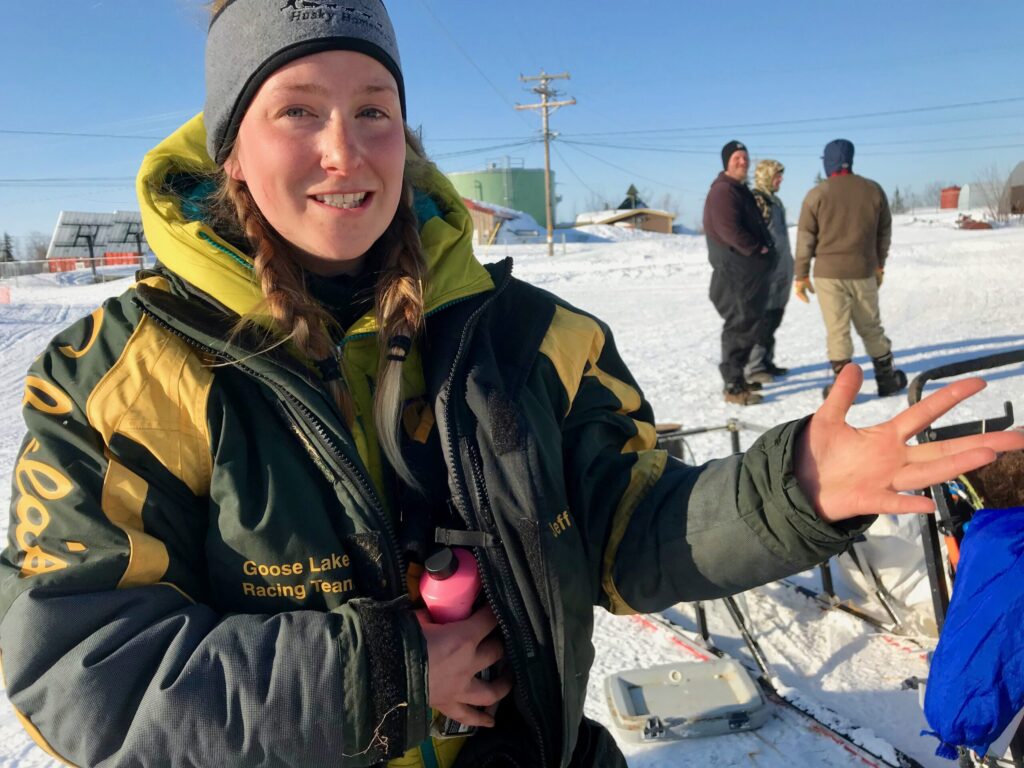The community of Ambler on the upper Kobuk River, population 264, is one of the busiest checkpoints on the race trail.
KNOM’s Gabe Colombo has this report on the people who come together to keep it up and running.
Lolo Johnson is one of the most important people in Ambler’s operations for the 440. She’s the head cook, and right now she’s stirring a pot of caribou meat in broth.
“I’m making meatloaf, and it’s mixed with moose meat and regular ground beef. And we’re going to make mashed potatoes to go with it. We have turkey soup, we’re going to have caribou meat and we’re going to make a gravy mix with that, and then we’ll mix it with rice. So that’ll be the last of our menu, the last of the cooking!”
Lolo was born in Kotzebue, but she’s been in Ambler 12 years and worked the 440 ever since. She presides over the kitchen in the race checkpoint. It’s a wooden A-frame building in the center of town.
The building hums with activity day and night as visitors and villagers alike mingle and chow down. Outside, people congregate around the three big drums of hot water boiling on wood fires, as they wait for mushers to come in or head out.
“It’s a cold winter, so we hardly get out and do stuff, but it feels good to. And everybody, the whole community, enjoys this, too: seeing new people, hanging out, hearing stories, sitting around talking, eating.”
Ambler is one of the busiest checkpoints on the trail. It’s a revolving door of mushers: They come, they rest, they go, they come back ten or twelve hours later, they rest some more, they go again.
There’s a lot to take care of, Lolo says: hauling cold water from the river, chopping wood for the fire, checking mushers in:
“There’s people that take care of the dropped dogs. The mushers that come in — we have volunteers that help to house them and we bring them to the school. So we just have people all over the place, people that stay up 24 hours sometimes.”
Community members also make things: Handmade signs for the mushers plaster the walls of the checkpoint building. And a group of women carry on a tradition of sewing fur gloves and hats as musher gifts. One year, Lolo says, a musher received a fox hat.
“And she loved her hat so much that she didn’t take it off even when she went to eat. So when we went down to the banquet in Kotzebue, she finally took her — we didn’t know what kind of a hair style she had because she wore her hat. So I told her, ‘Gee, I finally saw what kind of hair style!’ Her hair was all messy, and I kind of embarrassed her.”
One musher that receives a lot of love in Ambler is Dempsey Woods, Sr. He’s from Shungnak, just down the trail.
People whistle as he pulls into town for the second time. He says running this part of the race is like coming home.
“All the places where I used to mush growing up as a kid, it’s awesome to see. And that’s when I used to watch, when they first run the 440, see the areas where I used to go watch them pass by, and say, ‘One day, I’ll do that.’”
Woods is the current red lantern, with over 150 miles to go. He says he wants to rest the dogs for a good long while.
He gets them settled with cold water and fish for lunch. Then, he heads inside himself for some moose meatloaf and turkey stew, courtesy of Lolo.

Image at top: Handmade musher signs plaster the walls of the Ambler checkpoint building (Photo: Gabe Colombo, KNOM)







